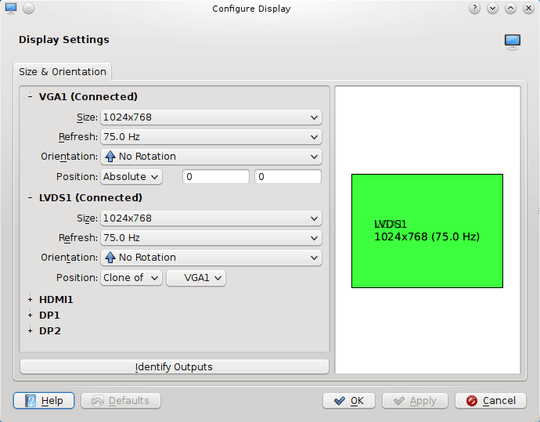2
0
I'm running Kubuntu 10.04 x64 on a Lenovo ThinkPad R500, with an external monitor attached.
If I configure extended desktop, everything works fine. The settings look like this:

After a reboot, these settings are reset and both screens are mirrored. The settings look like this:

I had my extended desktop working just fine under Ubuntu/GNOME, so I'm assuming there's something different about how KDE handles this config, I just can't seem to find the answer.
Does anyone know how to get my configuration to stick?
I'm trying to figure out how it's done in regular Ubuntu/GNOME, because it works just fine there. I use my laptop with and without the external screen all the time, and I'd prefer something that just magically works. – ThatGraemeGuy – 2010-07-13T07:09:57.893
@Graeme Donaldson: See my edit. – harrymc – 2010-07-13T08:08:48.990
You can add your xandr configuration call to the kdm startup file. – txwikinger – 2010-07-13T16:20:40.087
@harrymc: Here you go – txwikinger – 2010-07-13T16:21:05.923
Thanks, but this isn't much better. It takes me about 30 seconds every day to get my dual screen config the way I want it. I'd rather keep doing that than spend countless hours trying to figure out convoluted instructions like that wiki page. – ThatGraemeGuy – 2010-07-15T12:47:41.587
@Graeme Donaldson: You can use one of the GUI tools to get your xrandr script right, then follow txwikinger's advice. – harrymc – 2010-07-15T14:18:21.777
OK I managed to get it working using arandr to generate the xrandr commands which I then put in a script. I symlinked the script in ~/.kde/Autostart, but this doesn't seem to be working for some reason. I'll figure it out some other time. – ThatGraemeGuy – 2010-07-19T11:22:13.897